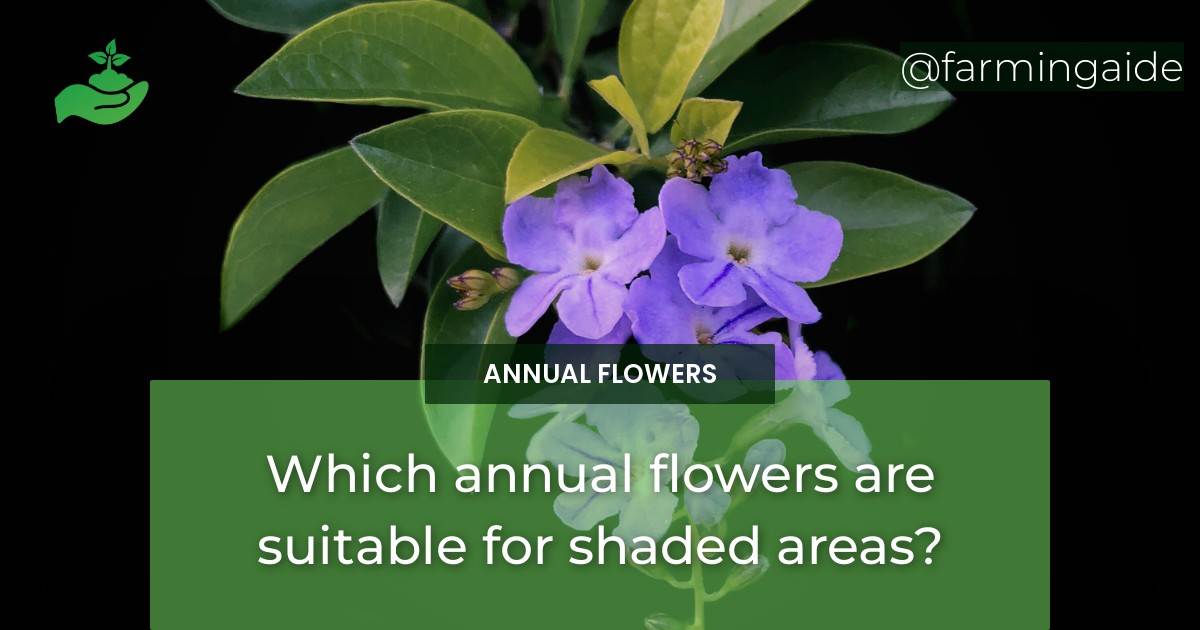Annual flowers are a great way to add color to any garden, but not all flowers thrive in shaded areas. Fortunately, there are a number of annual flowers that will do well in low-light conditions. In this article, we’ll take a closer look at some of the best annual flowers for shaded areas, along with tips for creating a beautiful garden in low-light conditions.
Best Annual Flowers for Shaded Areas
Impatiens
Impatiens are a popular choice for shaded areas due to their ability to bloom in a range of colors. They are easy to grow and don’t require a lot of maintenance, making them an excellent choice for beginner gardeners. Here are some characteristics and growing requirements to keep in mind:
Characteristics of Impatiens
- Blooms in pink, red, orange, white, and purple
- Grows up to 24 inches tall
- Thrives in moist, well-drained soil
- Needs regular watering
Growing Requirements for Impatiens
- Plant in a shaded area
- Soil pH should be between 6.0 and 6.5
- Plant after the last frost in your area
- Space plants 8 to 12 inches apart
Begonias
Begonias are another popular annual flower that do well in shaded areas. They come in a variety of colors and can bloom throughout the summer. Here are some characteristics and growing requirements to keep in mind:
Characteristics of Begonias
- Blooms in pink, red, orange, white, and yellow
- Grows up to 12 inches tall
- Thrives in moist, well-drained soil
- Needs regular watering
Growing Requirements for Begonias
- Plant in a shaded area
- Soil pH should be between 5.5 and 6.5
- Plant after the last frost in your area
- Space plants 6 to 12 inches apart
Coleus
Coleus plants are known for their colorful foliage, making them an excellent choice for adding interest to shaded areas. Here are some characteristics and growing requirements to keep in mind:
Characteristics of Coleus
- Foliage comes in a variety of colors, including green, purple, pink, and yellow
- Grows up to 36 inches tall
- Thrives in moist, well-drained soil
- Needs regular watering
Growing Requirements for Coleus
- Plant in a shaded area
- Soil pH should be between 6.0 and 7.0
- Plant after the last frost in your area
- Space plants 12 to 18 inches apart
Lobelia
Lobelia plants are known for their blue, purple, or white flowers, making them an excellent choice for adding color to shaded areas. Here are some characteristics and growing requirements to keep in mind:
Characteristics of Lobelia
- Blooms in blue, purple, or white
- Grows up to 12 inches tall
- Thrives in moist soil
- Needs regular watering
Growing Requirements for Lobelia
- Plant in a shaded area
- Soil pH should be between 5.5 and 6.0
- Plant after the last frost in your area
- Space plants 4 to 6 inches apart
Can I Plant Shade-Loving Annual Flowers in Sunny Areas?
Yes, you can plant bright annual flowers for shade in sunny areas. While they may not thrive as well as they would in shade, some shade-loving annuals can still tolerate sunny conditions with proper care. Be mindful of watering and monitor for signs of stress due to the increased sun exposure.
Creating a Beautiful Garden in Low-Light Conditions
Evaluating Your Garden Site
Before you start planting, it’s important to evaluate your garden site to determine how much shade it receives. Here are some tips:
Understanding Light Requirements
- Full sun: 6 or more hours of direct sunlight per day
- Partial shade: 4 to 6 hours of direct sunlight per day
- Full shade: less than 4 hours of direct sunlight per day
Identifying Shaded Areas
- Observe your garden throughout the day and note which areas receive the least amount of sunlight.
- Shaded areas can also be identified by the presence of moss or algae on the ground.
Preparing Your Garden Site
Once you’ve identified the shaded areas of your garden, it’s time to prepare the soil. Here are some tips:
Soil Preparation
- Remove any weeds or debris from the area.
- Loosen the soil to a depth of 8 to 10 inches.
Adding Organic Matter
- Add organic matter to the soil, such as compost or well-rotted manure.
- This will improve soil structure and drainage.
Fertilizing
- Apply a balanced fertilizer to the soil before planting.
- Follow the instructions on the fertilizer packaging for application rates.
Planting Your Garden
Now it’s time to start planting. Here are some tips:
Choosing the Right Plants
- Choose plants that are suitable for shaded areas, such as impatiens, begonias, coleus, and lobelia.
- Consider the mature size of the plants when spacing them.
Proper Plant Spacing
- Space plants according to their mature size to prevent overcrowding.
- This will also allow for proper air circulation, which can prevent disease.
Watering and Mulching
- Water plants regularly, keeping the soil moist but not waterlogged.
- Mulch around the plants to help retain moisture in the soil.
Maintaining Your Garden
Once your garden is planted, it’s important to maintain it throughout the growing season. Here are some tips:
Regular Watering
- Water plants regularly to keep the soil moist.
- During periods of drought, you may need to water more often.
Replenishing Mulch
- As the mulch decomposes, add more to maintain a depth of 2 to 3 inches.
- This will help retain moisture in the soil and suppress weed growth.
Deadheading and Pruning
- Remove spent flowers and yellowing leaves to encourage new growth.
- Prune plants as needed to maintain their shape and size.


